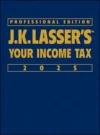Tax-Advantaged Ways to Pay Back-to-School Expenses
According to the U.S. Census Bureau (www.census.gov/newsroom/releases/pdf/cb10ff-14_school.pdf), 27% of the population over the age of 3 is enrolled in school. In a few short weeks, children will be returning to school. Many adults as well will be continuing their education. Where can you find the money to pay for tuition, books, and other education expenses? Here are some places to look:
Redeem U.S. Savings Bonds
If you purchased bonds after 1989 and you bought them when you were at least 24 years old, the interest on the bonds can be tax free. The redemption proceeds you receive include principal (what you paid for the bonds) and interest (what the bond value is now versus what you paid). The interest is tax free if you meet all of these conditions:
- You use the proceeds for qualified higher education costs.
- The costs are for you, your spouse, or dependent.
- Your modified adjusted gross income (MAGI) is no more than $105,100 for joint filers or $70,100 for other filers (a partial exclusion applies for joint filers with MAGI up to $135,100, or $85,100 for other filers).
Withdraw Funds from 529 Plans
Money taken out of these plans is also tax free to the extent the funds are used for qualified higher education costs. There is no cap on the dollar amount, and tax-free treatment is not affected by the income level of the person who set up the plan or of the student-beneficiary. Qualified higher education costs include tuition, room and board, fees, books, supplies, and equipment. Through the end of 2010, qualified costs also include amounts used for computer technology, including the purchase of a computer and Internet access fees.
Withdraw Funds from Coverdell ESAs
Withdrawals from these plans apply not only to higher education costs, but also costs of primary and secondary school through the end of 2010. The definition of qualified education expenses is very broad; it includes tuition, fees, academic tutoring, special services for special needs beneficiaries, books, supplies, computers, Internet access, and equipment. It also includes room and board, uniforms, transportation, and supplementary items and services, including certain extended day programs.
Get a Scholarship or Fellowship
Financial aid is an important way to pay some or all of the costs of education and can be awarded for athletics, music, scholarship, financial need, or for other reasons. If a student wins this type of financial aid, it may or may not be taxable. First, the award must be made to a student pursuing a degree. Second, the funds must be used by a degree candidate for qualified expenses. These include tuition, as well as fees, books, and equipment if certain conditions are met. Funds used to pay room and board or for travel costs are taxable.
Pell grants are treated like scholarships for purposes of tax rules, so funds from the grants used for tuition are tax free, while amounts for housing costs are not.
Exception: Benefits paid under the new GI bill are not taxable. Benefits can include amounts for tuition and housing. For details, see www.gibill.va.gov.
Tap into an IRA
IRAs are generally intended to provide retirement income, but can be used for educational purposes. Withdrawals from IRAs before age 59û usually are subject to a 10% early distribution penalty. However, withdrawals to pay for qualified education expenses for you or your spouse or dependent are penalty free. Qualified education expenses include tuition, fees, books, supplies, and equipment required for enrollment or attendance at an eligible educational institution. In addition, if the student is at least a half-time student, room and board are qualified education expenses, as are expenses for special needs services incurred by or for a special needs student.
Caution: You are still taxable on the distribution. Thus, if the IRA has been funded entirely by deductible contributions, the entire withdrawal for qualified education expenses is includible in gross income.
Check for Employer-Paid Education Assistance
As part of an array of benefits offered by a company, your employer may have a qualified education assistance program. If so, up to $5,250 of such assistance is tax free. If your employer pays for job-related education or training, all of the assistance is a tax-free fringe benefit.
Last Word
While education can be costly, tax breaks can help to ease the payment challenge. You can also qualify for tax credits, tuition reduction, and other tax breaks to help you pay for higher education. Review all of your options!
Mortgage interest
Fully deductible interest on up to two residences if acquisition debt secured by a home is $1 million or less, and home equity debt is $100,000 or less.



